
This chart so needs to be changed!
Not everyone who has pain shows it in their faces.
Perhaps this should only apply to children?
.Not everyone who has pain shows it in their faces.
Perhaps this should only apply to children?
.
.
Good Wednesday All;
Here I am! hehehe
Sorry that I haven't blogged one bit since we got back home. I meant to, but this back of mine is less than nice about that...
If I have missed anything in your blogs, please let me know. (I believe that I am almost caught up)?
Now where were we?
By now you have read Casey's entry of her experience in Minnesota, so I will try not to repeat.
But I do have a few pictures for you.
(I should probably warn you that below there is one picture of her innards).
While we were waiting for Dr. Sutherland, she had to try to be occupied...
So why not play with the expensive medical instruments?
.
.
.
.
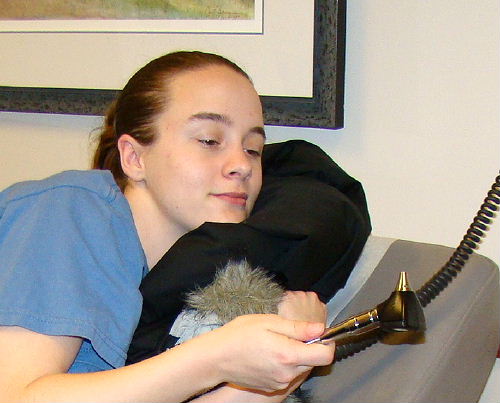
(Kids today). hehehe
"...and lead us not into temptation..."
.
.
.
.
.
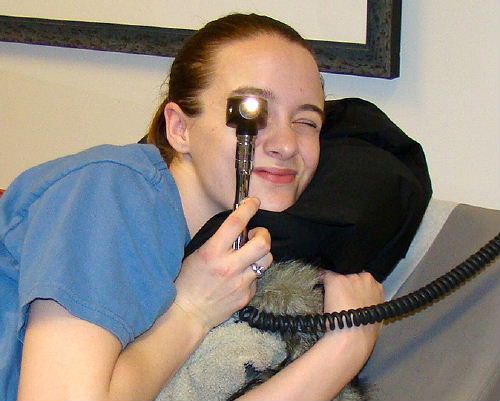
That prayer obviously came too late...
.
.
.
She showed me her Popeye arm...
.
.
.
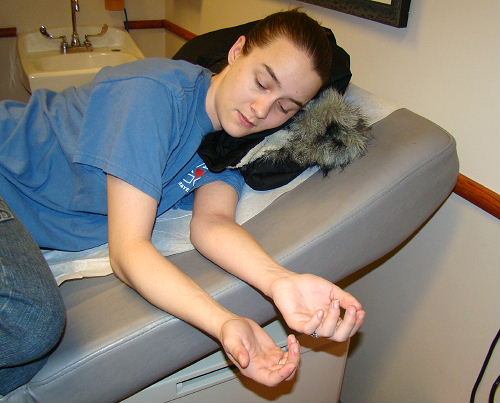
.
.
.

.
HELP! Please?
I have been unable to uncover anything about that radioactive contrast dye that was spilled into her arm.
Can anyone enlighten me why we should not be concerned about the long term side effects of her radiologists accident?!?
Knowledge is power, and I would feel better being "in the know".
Here is one of the pictures from that fateful EGD.
.
.
.

Please do not ask me how to interpret it all. (Nor do I know what the white speckles are).
Casey will have to undergo more surgery.
This surgery, to be a 'detour' of sorts. Her bile is backing up from her small intestine into her stomach. This is what is causing her the pain that she has been having for at least the past month. For now, she is on Carafate. It is an ulcer drug, but it coats the stomach and intestines, so her pain won't be so bad.
Dr. Sutherland is trying to buy her a bit of time by putting her on this course of treatment. I have just read that you can take it up to 6 or 8 weeks, (depending on the site you read).
I thought he had mentioned 6 months.
.
.
.
Below is George. He is Swedish- and very talkative. He drives the little buggy for people that are unable, or unwilling, to walk miles underground every day. He is a joy to the ill, and a contagiously happy man for everyone!
.
.
.

Casey and George.
.
.
.
.
.
These are two of the doors we passed by on our way to one of Caseys tests.
They made me giggle!
.
.
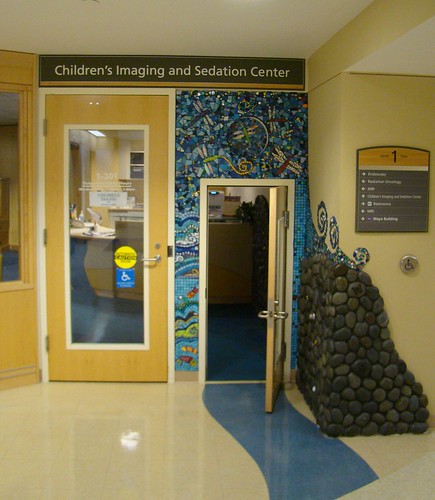
Very clever!
.
.
After all was said and done, we were on our way home...
This truck passed us on I-94...
.
.
.
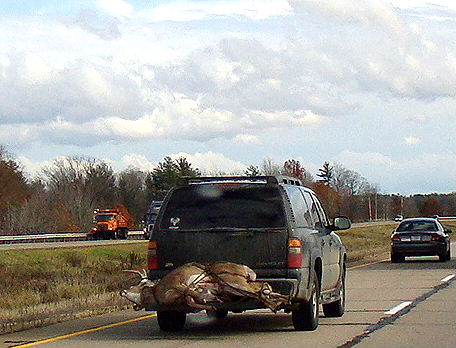
Lucky bow hunters.
(Seeing them also made me very hungry)!
.
.
.
It rained almost every day of our week there. Happy I had my umbrella.
Yes, Punk hates it!
Lots of rain, and plenty of wind too.
.
.
.
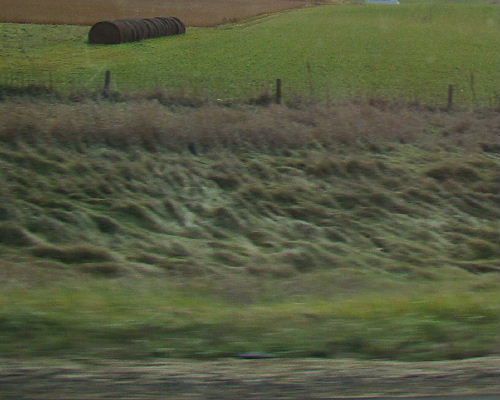
The grasses put down by the strong winds...
.
.
.
Good to see a bit of color left over -in the trees and on the hills...
.
.
.
.
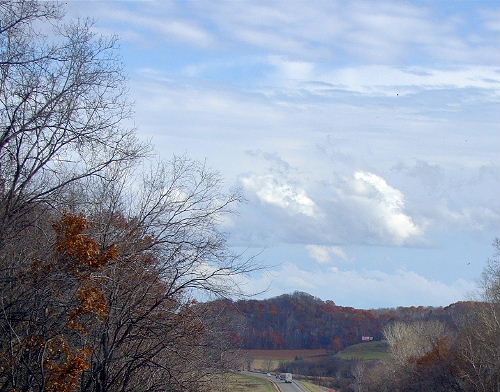
.
.
As we neared home, it became apparent that we had also received a ton of rain while we were away.
.
.
.
.
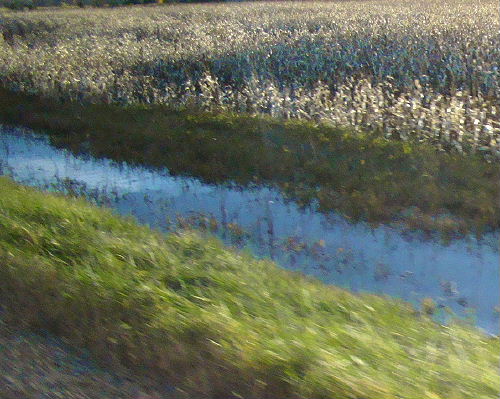
Just one of the ditches on our road...
.
.
.
And then to see old John Ryan's hill- (The last hill before home).
There is a little road that goes off to the left. That is where the original Ryans home was.
.
.
.
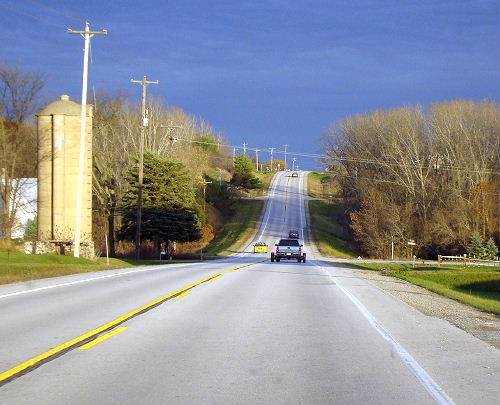
.
.
Down to a third of a mile now. And always nice to see ALL of the pine trees there? Mom and Dad planted every single one that you can see in this picture!
.
.
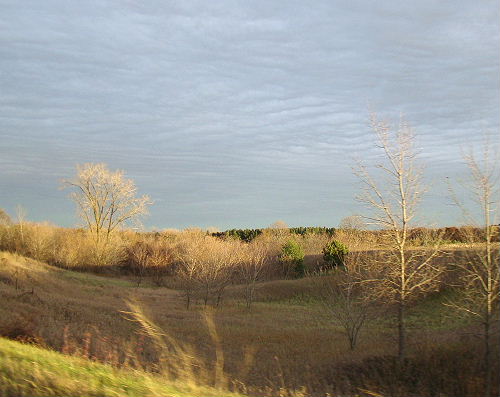
OK. So it isn't the most impressive photo of those trees,
But there are over 40 acres that they did plant.
.
.
And then came...
.
.
.
.
.
.
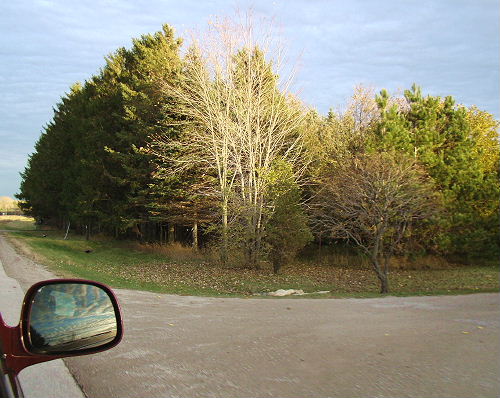
.
.
.
.
Only one more driveway, and we were home!!!!
.
.
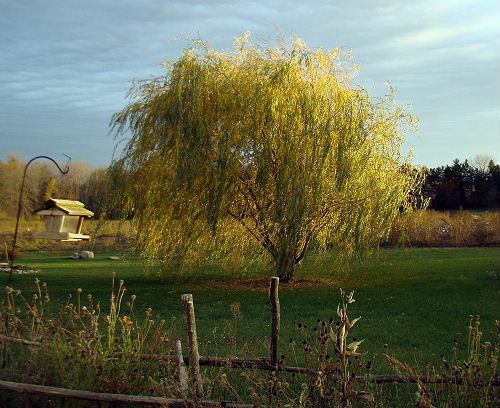
No one stole my weeping willow! hehehe
.
.
And some things never change...
.
.
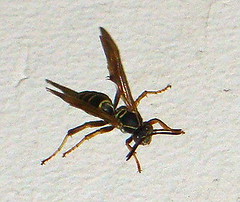
Yes, he was on the INside !
.
.
At any rate, we are home-
And when Casey's "detour" is done, then all will be well once again.
Hope all is well in your little corner of the world!
Love to all.
XOXO
Me

